Music Theory Basics
Piano Layout
A general piano has 88 keys and repeats 12 notes continuously. These consist of 7 white notes and 5 black notes. The most important part of starting is finding the middle C key which is white key left of the 2 black keys near the middle of the piano.
Identifying Notes
The white notes loop from A B C D E F G and back to A. However, the middle C as mentioned is the center of a lot of songs and is considered the start point.
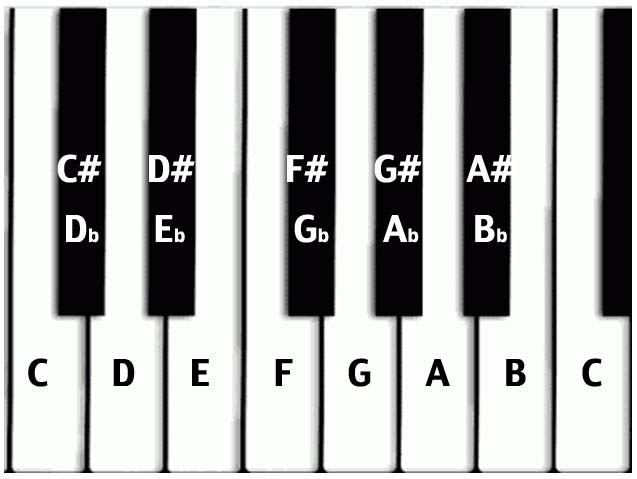
Sharps and Flats (Accidentals)
The black keys are known as the sharps and flats. Moving from one key to another (eg from the middle C to the black key directly right of it) is considered a "half-step" move. C to D for example is considered a "full-step". Sharps (#) are half steps to the right while Flats (b) are half steps to the left.
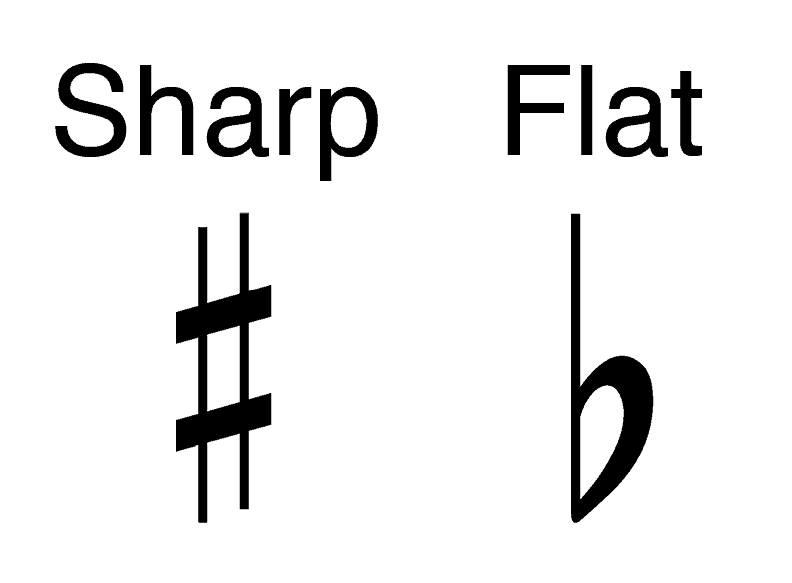
Each black key has two names. For example, the black key half step right of C is called a C sharp (C#) but it's also half step left of D so it's also D flat (Db).
Reading Sheet Music
A sheet music consists of two different sets of lines. The treble clef (G clef) is usually played with the right hand. The bass clef (F clef) is played with the left hand.
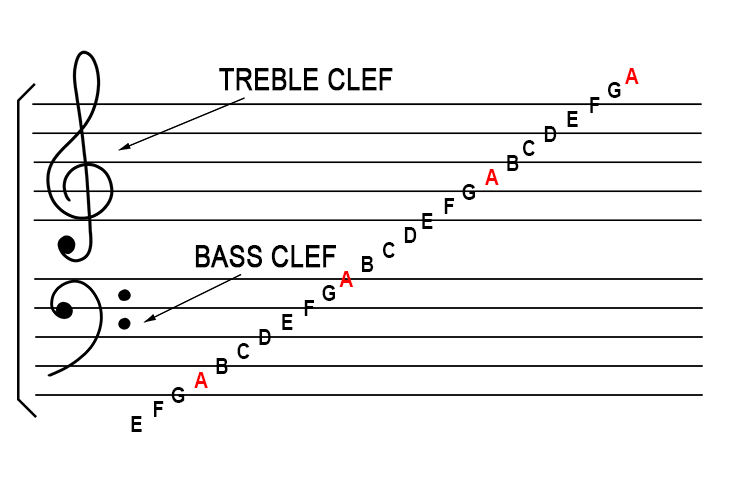
To read the notes, first notice that there are 5 lines and 4 spaces in between. A note is a circle (either filled or unfilled) that occupies a space or sits on top of a line. For the treble clef, use the mnemonic "Every Good Boy Deserves Food" for the lines (E G B D F) and "FACE" for the spaces.
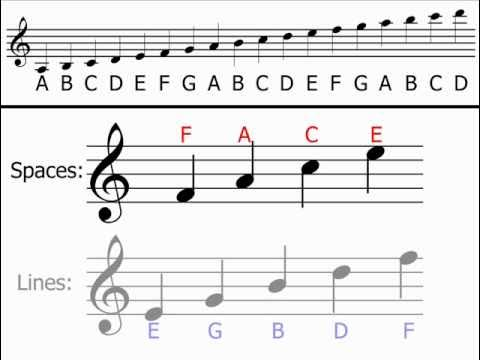
Key Signatures
On the right of the clefs, sometimes there are sharps or flats symbols. Depending on which line or space it occupies, it means that key is played with that accidental every time it appears. The set of these accidentals dictate the "key" of the song.
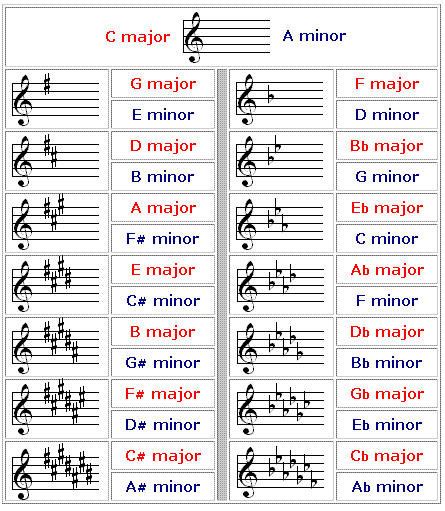
For example, a song in G major key (or E minor) has all natural white keys except F sharp (F#) as shown in the diagram.
Bars and Note Values
Each note symbol dictates the duration it's played for. A normal 4/4 song has 4 beats in a bar. Each bar is separated by a vertical line breaking up the staff. A whole note (semibreve) is held for the entire bar.

Rest symbols indicate periods of silence with durations corresponding to their note equivalents.